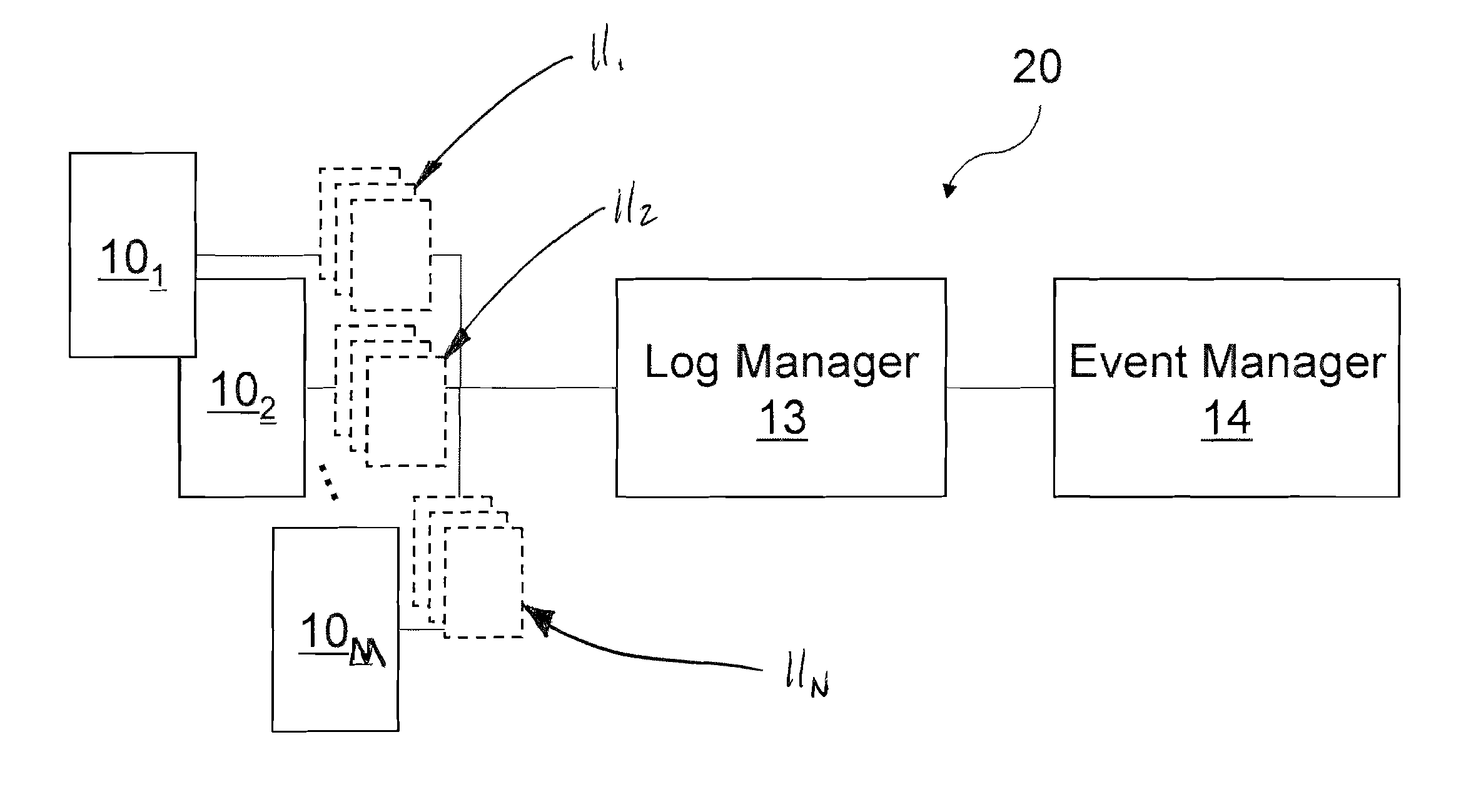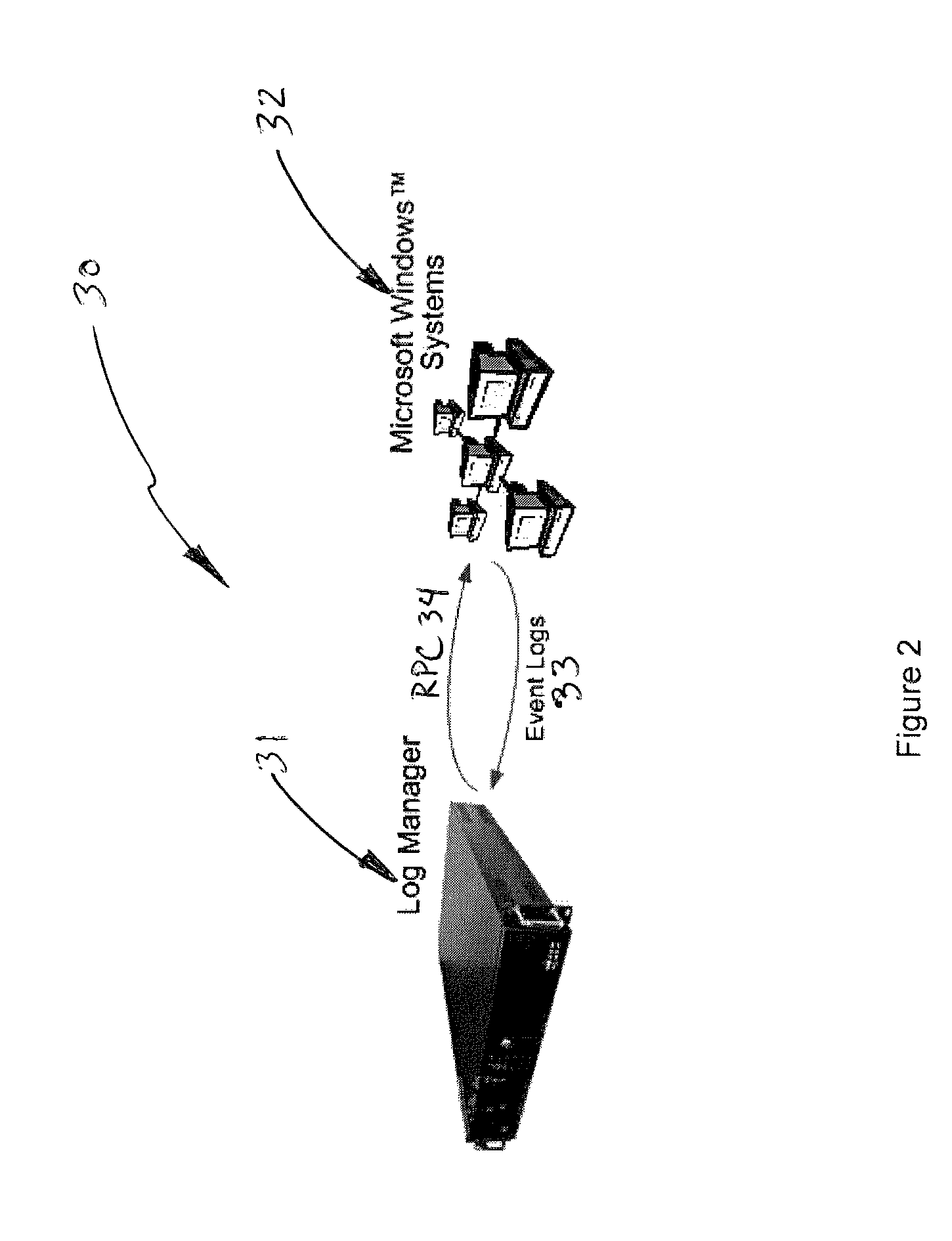Log collection, structuring and processing
a technology of log messages and log data, applied in the field of network monitoring and information management, can solve the problems of inability to comprehensively review log files across so many technologies, inability to prevent certain logins and their prevention, and inability to accurately identify and restore log messages, etc., to achieve the effect of improving the transfer of information, archiving log messages, and facilitating identification and restoration
- Summary
- Abstract
- Description
- Claims
- Application Information
AI Technical Summary
Benefits of technology
Problems solved by technology
Method used
Image
Examples
Embodiment Construction
Parse Tag DefinitionsTagDefault Regular Expression CodeFunctionsip(?1??\d{1,2}| 2 [0-4] \d | 25 [0-5]) \.Report field: Source IP Address(?1??\d{1,2} | 2 [0-4] \d | 25 [0-5]) \.Parses source IP address into the 4(?1??\d{1,2} | 2 [0-4] \d | 25 [0-5]) \.source IP fields representing the four(?1??\d{1,2} | 2 [0-4] \d | 25 [0-5])octets a, b, c, and d. This is the mostcommon tag to use when parsing theSIP.NOTE: for both sip and dip tag, theregular expression must describe thecharacter immediately following thelast digit of the 4′th octet or 3 digitoctets (e.g., 245) get truncated to 2 digitoctets (e.g., 24). If tag is end of line thanspecify the end of line character ($).sipa1??\d{1,2} | 2 [0-4]\d |25[0-5]Report Field: Source IP Address Octet AParses the first octet of the source IPaddress.sipb1??\d{1,2} | 2 [0-4]\d |25[0-5]Report Field: Source IP Address Octet BParses the second octet of the source IPaddress.sipc1??\d{1,2} | 2 [0-4]\d | 25[0-5]Report Field: Source IP Address Octet CParse...
PUM
 Login to View More
Login to View More Abstract
Description
Claims
Application Information
 Login to View More
Login to View More - R&D
- Intellectual Property
- Life Sciences
- Materials
- Tech Scout
- Unparalleled Data Quality
- Higher Quality Content
- 60% Fewer Hallucinations
Browse by: Latest US Patents, China's latest patents, Technical Efficacy Thesaurus, Application Domain, Technology Topic, Popular Technical Reports.
© 2025 PatSnap. All rights reserved.Legal|Privacy policy|Modern Slavery Act Transparency Statement|Sitemap|About US| Contact US: help@patsnap.com



